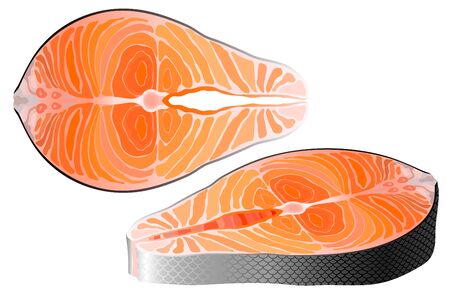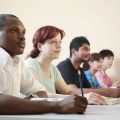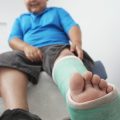1. Introduction to Concussions in Athletes
Concussions are a type of mild traumatic brain injury (mTBI) that happen when a blow or jolt to the head causes the brain to move rapidly inside the skull. This sudden movement can lead to changes in how the brain works, even if there is no visible injury. In the U.S., sports-related concussions are a growing concern, especially among young athletes and professionals who participate in contact sports like football, soccer, hockey, and basketball.
Overview of Concussions
A concussion can occur from direct impact, such as a tackle or fall, or from indirect forces that cause the head to whip back and forth. Symptoms may appear right away or develop over hours or days. Common symptoms include headache, dizziness, confusion, memory problems, and sensitivity to light or noise. Every concussion is different—some athletes recover quickly, while others may experience lingering effects that require careful management.
Prevalence in the Athletic Community
Concussions are more common than many people realize. According to recent data from the Centers for Disease Control and Prevention (CDC), millions of sports-related concussions happen each year in the U.S. The table below highlights how frequently concussions occur in popular American sports:
| Sport | Estimated Annual Concussions |
|---|---|
| Football | 100,000 – 200,000+ |
| Soccer | 50,000+ |
| Hockey | 30,000+ |
| Basketball | 35,000+ |
| Lacrosse & Others | Varies |
The Importance of Awareness and Early Intervention in U.S. Sports Culture
In recent years, American sports organizations at all levels—from youth leagues to professional teams—have placed greater emphasis on recognizing and managing concussions early. Increased awareness helps coaches, parents, trainers, and athletes themselves respond quickly when a concussion is suspected. Early intervention is crucial because it can prevent further injury and support a safe recovery process. Physical therapists play a key role in this process by helping athletes return safely to their sport while prioritizing brain health and overall well-being.
2. Understanding the Impact of Concussions
What Happens During a Concussion?
A concussion is a type of traumatic brain injury that can happen when an athlete takes a hit to the head or body. This sudden impact causes the brain to move rapidly inside the skull, leading to changes in how the brain functions. These changes aren’t always visible on scans but can have real effects on how someone feels and performs.
Common Symptoms and Their Effects
Concussions affect athletes in several ways—physically, cognitively, and emotionally. Each area can influence both sports performance and everyday life. Here’s a quick overview:
| Symptom Type | Examples | How It Affects Athletes |
|---|---|---|
| Physical | Headache, dizziness, balance problems, fatigue, sensitivity to light/noise | Makes it hard to train or play safely; increases risk for further injury |
| Cognitive | Trouble focusing, memory issues, feeling “foggy” or slow thinking | Affects reaction time and decision-making during games; may also impact schoolwork or daily tasks |
| Emotional | Irritability, sadness, anxiety, mood swings | Makes dealing with stress from competition or recovery tougher; impacts relationships with teammates and family |
The Real-Life Impact on Athletes
When an athlete has a concussion, their physical abilities might drop—they could feel off balance or more tired than usual. At the same time, they might have trouble remembering plays or keeping up with fast-paced action on the field. Emotional symptoms like frustration or sadness are also common and can make recovery feel even harder.
Everyday Life Challenges
It’s not just about what happens during practice or games. Concussions can affect sleep patterns, concentration at school or work, and even day-to-day tasks like driving or socializing. That’s why proper management—including physical therapy—is so important for getting athletes back to their best selves, both on and off the field.

3. Physical Therapy Assessment in Concussion Management
When athletes experience a concussion, physical therapists play a key role in assessing the effects and planning the right treatment. The evaluation process is designed to identify specific impairments that may impact an athlete’s recovery and safe return to play. Here’s how physical therapists approach concussion assessment:
Comprehensive Evaluation Process
Physical therapists use a combination of clinical tests and observation to assess how a concussion has affected an athlete’s physical abilities. The main areas evaluated include balance, coordination, and vestibular (inner ear) function. These functions are vital for sports performance and everyday activities.
Key Areas Assessed During Concussion Evaluation
| Area | What It Involves | Why It Matters |
|---|---|---|
| Balance | Standing on one leg, walking heel-to-toe, or using special balance platforms. | Poor balance increases risk of falls and injuries during sports or daily life. |
| Coordination | Finger-to-nose tests, rapid hand movements, or catching objects. | Good coordination is essential for athletic skills like throwing, catching, or dribbling. |
| Vestibular Function | Head movement tests, eye tracking exercises, or dizziness assessments. | The vestibular system helps control balance and spatial orientation; impairment can cause dizziness or unsteadiness. |
Common Assessment Tools Used by Physical Therapists
- BESS Test (Balance Error Scoring System): Measures balance in various stances with eyes open and closed.
- VOMS (Vestibular/Ocular Motor Screening): Checks for symptoms like headache or dizziness with eye movements and head turns.
- Dual-Task Assessments: Evaluates ability to perform a physical task while thinking about something else, similar to real-game situations.
Importance of Individualized Assessment
No two concussions are exactly alike. Physical therapists tailor their assessments to each athlete’s unique symptoms and needs. This personalized approach helps create a plan that addresses specific challenges and supports a safe return to activity.
4. Rehabilitation Strategies and Interventions
Evidence-Based Physical Therapy Treatments
When it comes to managing concussions in athletes, physical therapy offers a variety of evidence-based interventions that help promote safe and effective recovery. These strategies are tailored to the specific needs of U.S. athletes, focusing on returning them to play safely while reducing the risk of further injury.
Graded Exercise Therapy
One important approach is graded exercise therapy. This means athletes start with low-intensity activities and gradually increase the intensity as their symptoms improve. Research shows that carefully supervised aerobic exercise can speed up recovery and reduce post-concussion symptoms. Here’s a simple example of how graded exercise might look:
| Stage | Activity | Goal |
|---|---|---|
| 1 | Light walking or stationary cycling | No symptom worsening |
| 2 | Moderate jogging or light resistance training | Tolerate increased heart rate |
| 3 | Sport-specific drills without contact | Improve coordination & focus |
| 4 | Non-contact training with teammates | Build confidence & skill |
| 5 | Full practice & return to competition | Full recovery & readiness |
Balance and Vestibular Training
Athletes with concussions often experience balance problems or dizziness. Vestibular rehabilitation is a specialized form of therapy designed to address these issues. Physical therapists use exercises that challenge balance, coordination, and eye movements. Examples include standing on one leg, walking heel-to-toe, or following moving targets with the eyes. This type of training helps athletes regain stability and reduce the risk of falls or further head injuries.
Main Vestibular Exercises Used in U.S. Clinics:
- Bosu ball balance drills
- Saccadic eye movement exercises
- Head-turning while walking in a straight line
- Functional tasks like catching a ball while balancing on one foot
Return-to-Play Protocols for U.S. Athletes
The return-to-play process is highly structured in the United States to protect athletes from returning too soon and risking another concussion. Physical therapists work closely with athletic trainers, coaches, and medical providers to follow guidelines recommended by organizations like the CDC and NCAA. Each step requires that the athlete remains symptom-free before progressing:
| Step | Description |
|---|---|
| 1: Symptom-limited activity | No symptoms with daily activities at home/school. |
| 2: Light aerobic exercise | No resistance training; mild increase in heart rate. |
| 3: Sport-specific exercise | No head impact activities. |
| 4: Non-contact training drills | Add more complex movements. |
| 5: Full-contact practice | If cleared by healthcare provider. |
| 6: Return to play/competition | Athlete resumes normal sports participation. |
Cultural Considerations for American Athletes
Athletes in the U.S. often face pressure to return to play quickly. Physical therapists educate athletes, families, and coaches about the importance of following protocols strictly to prevent repeat concussions or long-term health problems. Open communication among everyone involved is key for a successful outcome.
5. Collaborative Care and Advocacy
The Importance of Teamwork in Concussion Management
In the world of American team sports, managing concussions is never a one-person job. Physical therapists (PTs) play a crucial role by working closely with athletic trainers, coaches, healthcare professionals, and families. This collaborative approach ensures that athletes get the best care possible, from initial injury to safe return-to-play.
How PTs Collaborate with Others
| Team Member | Role in Concussion Management | How PTs Work Together |
|---|---|---|
| Athletic Trainers | First responders, monitor symptoms, coordinate care | Share updates on athlete progress, create rehab plans together |
| Coaches | Support recovery, adjust practice and play time | Educate about concussion signs, communicate athlete needs |
| Healthcare Professionals (MDs, Neuropsychologists) | Diagnose, provide medical oversight, clear for return-to-play | Coordinate treatment plans, share assessment results |
| Families | Support at home, encourage following protocols | Offer education, answer questions about recovery and safety |
PTs as Advocates for Athlete Safety and Education
Physical therapists do more than just treat injuries—they educate everyone involved. PTs teach athletes how to recognize concussion symptoms and stress the importance of reporting them. They also train parents and coaches on prevention strategies like proper tackling techniques or using protective gear in sports like football, soccer, and basketball.
Concussion Prevention and Return-to-Sport Protocols
An essential part of advocacy is making sure that all team members understand the steps for a safe return to sport. PTs help develop gradual return-to-play programs tailored to each athlete’s needs. They make sure no one returns too soon—reducing the risk of further injury.
Key Steps in Safe Return-to-Play for Athletes:
- No activity until symptom-free at rest and with exertion
- Light aerobic exercise under supervision (walking or stationary cycling)
- Sport-specific exercise (e.g., running drills)
- No-contact training drills with progressive resistance training
- Full-contact practice after medical clearance
- Return to normal game play if fully cleared by the team physician and PTs confirm readiness
This step-by-step process requires constant communication between PTs and the entire sports community. By working together, everyone helps protect athletes’ health both now and in the future.

